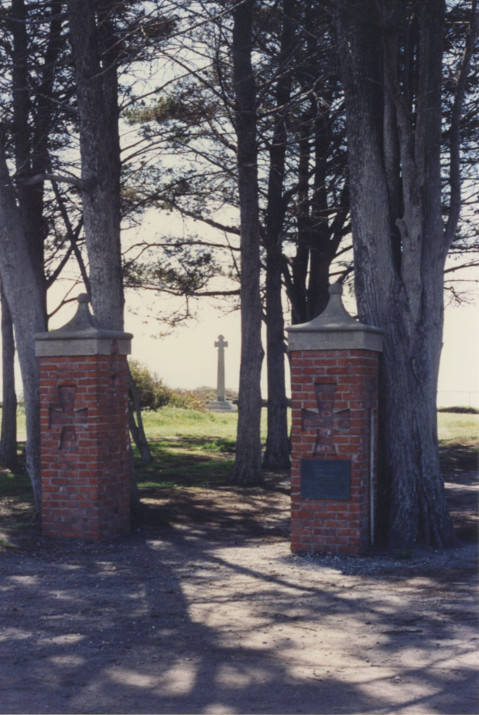Devereux Point
Former Estate of the Colin Campbell Family
This area’s recent history begins in 1919 with the arrival to American shores of the wealthy Colin Campbell family. Campbell was a retired British army officer who had served in India and Afghanistan, and as a British military attaché in Tsarist Russia. His wife, Nancy, was the daughter of Levi Leiter, a partner in the highly successful Marshall Field retail chain based in Chicago. One of her sisters married Lord Curzon, a viceroy of India. In England, the Campbells made their home in an imposing seaside castle in Kent and led the kind of sumptuous lifestyle that money and blue blood connections could bring.

English taxation of their American-derived income was extremely high, thus their decision to come to the U.S. Looking for property that would be similar to their coastal residence back home, they originally were interested in Hope Ranch but eventually settled upon a 250-acre tract at Coal Oil Point in Goleta, just west of Isla Vista. They also bought a separate 250-acre parcel further inland. The Campbells then sent for their three children and an estimated six train car loads of furnishings and set up temporary housekeeping at the Bonnymede estate in Montecito.
The colonel had a paved road, today’s Storke Road, built from Hollister Avenue to his new ranch. Month by month, the estate took shape with dozens of buildings, windbreaks of cypress and eucalyptus, and a polo field. Tragically, Campbell would not live to see his dream completed; he was struck down by a heart attack in the spring of 1923, just short of his 65th birthday.

Nancy Campbell pushed ahead with the development of the estate and the completion of the main house. The result was magnificent — a two-story, Spanish-Colonial Revival residence of some 20,000 square feet, which included more than 30 rooms and 18 baths. Architect Mary Craig utilized adobe made on the estate grounds to build the home. Craig and Nancy Campbell, both widows, went on to become close friends.
The family filled the home with the finest of furnishings, art, and an incomparable library of first editions. The garage held five Rolls-Royces. The grounds included a blacksmith shop, tennis courts, a private lake, elaborate barbeque/picnic grounds, and a large red barn. A beach house was built at the bottom of the bluffs. Wheat and lima beans were grown on outlying parts of the property.
Nancy often entertained in a grand manner; one party in 1926 was attended by Prince George of England, who would later ascend to the English throne. Nancy died in 1932 and was buried next to her husband overlooking the Pacific (the bodies have since been removed to Washington, D.C.), and son Colin Jr. took over the ranch operations. In 1941, he decided to close down the estate. The subsequent auction drew a number of celebrities including Charlie Chaplin and Cary Grant. A dance floor ended up at Oak Park. The estate remained in family hands until 1946 when the Devereux School purchased the property.
The school’s roots go back to New Jersey, where Helena T. Devereux opened her first school for slow-learning children in 1912. A residential school opened in Pennsylvania in 1918, and in 1945 a West Coast campus was begun on property that now is part of Westmont College.
The school was able to purchase the entire Campbell Ranch for $100,000, an amazing price when one considers the manor house alone had cost some $500,000 to construct. The Devereux Foundation continues to operate a treatment center for developmentally disabled children and adults on 30-plus acres, other acreage being sold off over the years. The finely carved granite cross that once marked the resting place of Colin and Nancy Campbell still stands on the ocean-side bluffs.
Michael Redmon, director of research at the Santa Barbara Historical Museum, will answer your questions about Santa Barbara’s history. Write him c/o The Santa Barbara Independent, 122 West Figueroa Street, Santa Barbara, CA 93101.



